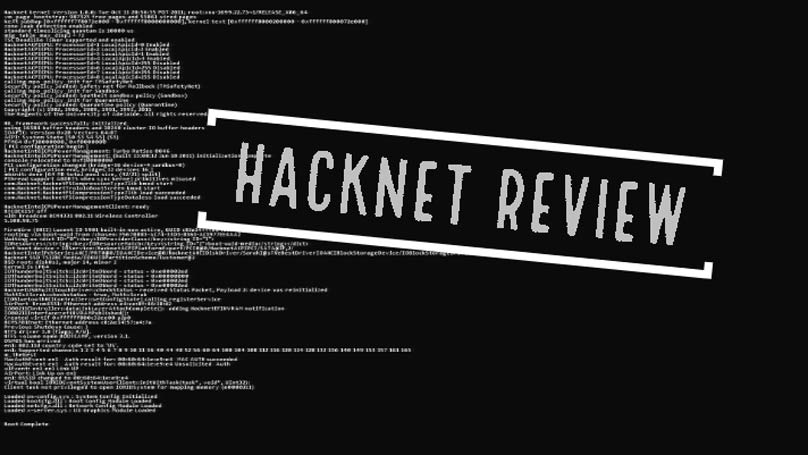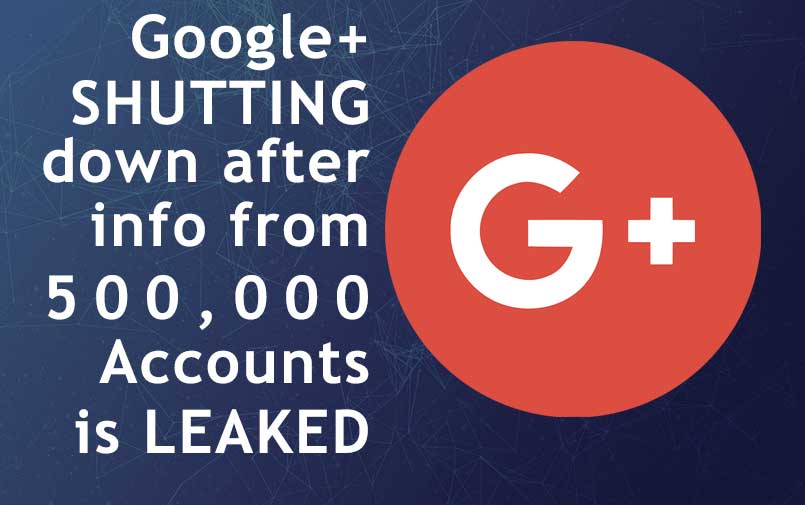CYBER ATTACK
Rearming for Cyber-warfare
War costs moneys and it is no brainers that the wealthy state with a bigger economy can always awash weapons of mass destruction at a moment notice to turn the tide of war.

Rearming for Cyber-warfare. War costs moneys and it is no brainers that the wealthy state with a bigger economy can always awash weapons of mass destruction at a moment notice to turn the tide of war.
In cybersecurity or rather cyber-warfare, funds are needed to upgrade hardware, technology and communications before assembling trained men dedicated to defend or attack. Recently, the United States (US) government has put this strategy to broad uses much like the military rearmament for any foreseeable future cyber-warfare.
Cyber-warfare policy worth USD700 billion
On Monday, 18 Sep 2017, the US Senate has passed a bill worth a “whoppy” USD700 billion war chest to create the country’s first ever cyber warfare policy. The draft was dubbed as a defense authorization bill and involved the use of offensive digital weapons as well as spending USD500 million in the modernization of federal information technology.
The modernization and technological software upgrade will come as handy as previously the US government sector was ranked lowly, at the bottom two places or 16th out of 18 industries compiled by the SecurityScorecard, a security risk rating agency.
Protection of strategic resources.
After the pumping many greenbacks into development of offensives cyber-weapons, US has also developed battle plans in protecting strategic resources of raw materials like oil and natural gases.
As such, the US Department of Energy (DOE) had introduced 20 cybersecurity projects to protect the American electric grid, and oil and natural gas infrastructure. Award up to USD50 million will be granted by DOE to support early stage research and development of next-generation tools and technologies in protection of strategic energy resources.
So far, the department has invested more than USD270 million over the past seven years in cybersecurity research development, and demonstration projects that are led by industry, universities and DOE’s National Laboratories.
Australia joins the rearmament race
US is not alone in the rearmament race of cybersecurity, the Australian government has pledged AUD50 million (USD39.7 million) over the seven years to build up its cyber security capability through a new cybersecurity cooperative research centre (CRC).
Additional funding of AUD89 million or USD70.8 million for the CRC will come from other channels such as from around 25 industry players, research and government partners. All these funds are part of the grander Australia’s AUD 240 million Cyber Security Strategy which formed the defensive shield in preventing attacks from any state-sponsored attackers or from any organized crime syndicates. Furthermore, the country has branched out to liaise with its “cyber-allies” in the region such as Singapore for a “joint cybersecurity exercise.”
Small is beautiful
Cybersecurity funds for Australia may seem like a dwarf as compared to more holistic “defense and attack” strategy adopted by US. But the notion is clear, each country should do its part and set aside resources for cybersecurity.
As a city-state, Singapore plays its part in cybersecurity with an upfront injection of USD12 million under its National Cyber Security R&D Program. The funding will go to finance around 9 public-private research projects in data protection and encryption as well as analysis report on malware attacks. The island-nation has recently prioritized cybersecurity in its borders and the topic even make it ways into its National Budget 2017.
Small it may be, but cybersecurity in Singapore is armed to its teeth. The city-state is ranked high and always placed among the top ten attacking countries by Threatmap, a web agency that tracks malicious cyber-attacks across the globe. In 18th to 19th September 2017, Singapore was even crowned as “numero uno” consecutively for being the top cyber attacker of the world.
BREAKING NEWS
Ransom attacks on high profile Instagram accounts

Ransom attacks on high profile Instagram accounts. There has been wave of attacks in which hackers demand bitcoin in order for the Instagram user to get their account back, they threaten to delete the account if the ransom isn’t paid.
There have been several victims of this attack, and they all claim to have received the same message from an attacker named “Pumpam”. The message lets the victim know that the hackers have possession of the account, and to email a particular address in order to start the recovery. It also mentions that the account will be deleted within 3 hours if there is no response.
Victims of the attack found that they could not recover the account through Instagram, as the account’s email address had been changed. This frustration and desperation to get possession of their accounts lead some users to pay the ransom. However, this wasn’t always successful, with some victims claiming that their account was still deleted.
Many of the victims feel let down by Instagram after they didn’t play an active role in helping them gain control of their accounts. Victims felt frustrated dealing with Instagram’s customer support when they only received generic responses to the issue, however this changed when vice’s tech arm Motherboard contacted Instagram about the issue and helped the users get possession back.
At present few details are known about the hacking campaign, including the hacker’s identities and where they are from. We urge Instagram users to be vigilant about their account security, make sure you have a secure password, that you back up your content in the event it is deleted, and don’t click on any nefarious looking links.
Photo by Katka Pavlickova on Unsplash
[stackCommerce layout=”2″ count=”5″ sort=”best_sellers”][/stackCommerce]
BREAKING NEWS
50 Million accounts exposed after Facebook security breach

50 Million accounts exposed after Facebook security breach. Facebook has revealed that almost 50 million of its users accounts were left exposed due to a security flaw. Facebook has more than two billion active monthly users, making security a high priority concern. The security breach has caused Facebook’s shares to drop by 3% on Friday, 28 September.
The breach was discovered this week, and is the latest controversy surrounding Facebook after British company Cambridge Analytica gained access to information of 87 million users, and the controversy surrounding disinformation in elections. However, this breach has been the largest in the company’s 14-year history.
Facebook has said the attackers exploited two bugs in the site’s “View as” feature. The feature, which was designed to give users a clearer view of their presence and more control over their privacy, allows users to check what information other people can see about them. The flaw allowed users to gain “access tokens” which allow access to accounts, through Facebook’s video-uploading program for birthday celebrations. Although it’s not yet known when the attack happened, it seems to occurred after the video-uploading program was introduced. Attacked attempted to harvest user’s personal identifiable information (PII). After the attack was discovered, Facebook forced 90 million users to log out. Facebook has not announced where in the world the 50 million users are.
There have been some major changes in Facebook’s security teams after its Chief Security Officer, Alex Stamos left in August this year for a teaching position at Stanford University. Facebook decided to split the team members so that security employees work within different teams across the company, in order to make security an innate part of Facebook.
Facebook’s data breach was a trending topic on Friday with users posting the breaking story as news outlets released it. User’s found that some of their posts were removed because Facebook’s algorithm saw them as suspicious activity or spam.
[stackCommerce layout=”2″ count=”5″ sort=”best_sellers”][/stackCommerce]
BREAKING NEWS
US Online Retail Company suffered a data breach affecting 6.5 million customers

US Online Retail Company suffered a data breach affecting 6.5 million customers. SHEIN debuted in 2008, and steadily grew to become one of the most acclaimed online women’s fashion stores. Their aim is to provide cutting edge fashion with an affordable price tag. The website primarily caters to women age 16-35, and is US based but ships to over 80 countries.
They recently discovered that their servers had been compromised by hackers in an attack that spanned from June 2018 until 22 August 2018 when the threat was recognised. Once SHEIN were away of the threat, they acted immediately, scanning the servers for weaknesses that were exploited and removed all possible back door entry points to the servers.
SHEIN have been selective with what information they have shared with the public; however we do know that email addresses and encrypted password information was obtained from the attack. We recommend that if you have an account with SHEIN, that you change your password as soon as possible, it is also good practise to use different passwords as often as you can, and make them complex, a password manager can help you keep track of your passwords.
The only promising news about this incident is that SHEIN don’t believe any payment card details were obtained by the hackers. However, SHEIN have enlisted an international forensic cyber security team to conduct a thorough investigation into the breach, and as a result will update users on their data if new information comes to light over the coming months.
If you do believe your payment card information has been compromised, the best thing to do is to contact your bank immediately, they will be able to issue a new card and enact any necessary security measures.
[stackCommerce layout=”2″ count=”5″ sort=”best_sellers”][/stackCommerce]
-

 GAME REVIEW6 years ago
GAME REVIEW6 years agoTop Hacking Simulator Games Every Aspiring Hacker Should Play: Part 1
-

 DEALS6 years ago
DEALS6 years agoGreat Ethical Hacking Courses for Beginners
-

 GAME REVIEW6 years ago
GAME REVIEW6 years agoHacknet Review
-

 DEALS6 years ago
DEALS6 years ago3 Reasons To Kickstart A Career As An Ethical Hacker
-

 HOW TO6 years ago
HOW TO6 years agoHow To Become an Ethical Hacker – Beginners Guide
-

 BREAKING NEWS6 years ago
BREAKING NEWS6 years agoGoogle+ Shutting down after info from 500k Accounts is leaked
-

 GAME REVIEW6 years ago
GAME REVIEW6 years agoTop Hacking Simulator Games Every Aspiring Hacker Should Play: Part 2
-

 BREAKING NEWS6 years ago
BREAKING NEWS6 years agoUS Online Retail Company suffered a data breach affecting 6.5 million customers






